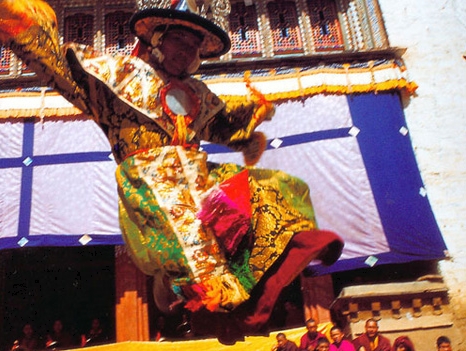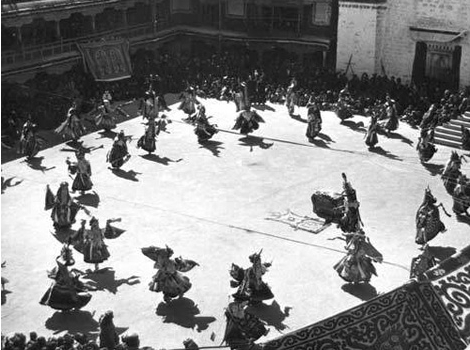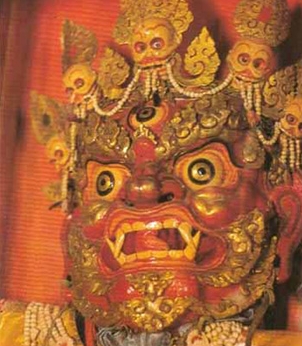
Qiangmu, also called "sorcerer's dance", is a kind of religious dance. "Semo qinmu qiangmu" is Gelug Qiangmu of Tibetan Buddhism performed by monks of Tashihunpo Monastery in Shigatse of Tibet. It is held in each eighth month of Tibetan year. In Tibetan language, "Semo" means "to watch", and "Qinmu" refers to "grand". Therefore, "Semo qinmu qiangmu" has the meaning of "watching grand religious dance".

Qiangmu originates from Tibet. It is a term of Tibetan language, and another name for it is "Tiaoyun". Due to varied sects and different scales of the temples, the forms of Qiangmu are largely identical but with minor differences. Take Sakyapa (commonly referred to as "Spotted Sect"), Kagyupa ("White Sect"), Nyingmapa ("Red Sect"), Gelug ("Yellow Sect") for examples, all of them have diverse contents and forms of "Qiangmu". No matter how they change, the psychology of people to please the gods, eliminate disasters and adore totems is mirrored in general. They all use dance to advocate religious doctrine. In this way, they can please both the gods and the people.

Though Qiangmu is one of the sacrificial activities for religious temples, it has its own features and is different from other religious activities. Monks perform this dance in the courtyard and on the ground of the temple, wearing unique masks, tools, and garments. The entire activity is presented by dance. It is a large-scaled dance based on dance drama.